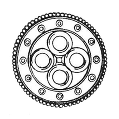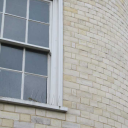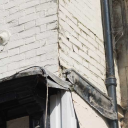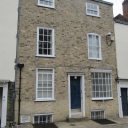CANTERBURY HISTORICAL
& ARCHAEOLOGICAL SOCIETY (CHAS)








Mathematical Tiles


Mathematical tiles have the appearance of bricks but are really tiles, hung upon wooden battons. They vary in appearance - some are very difficult to distinguish from bricks (Image 1) but others lack the flat regularity of well laid bricks (Image 2). Many walls present a mixture with bricks below and tiles above (Image 3). In many instances timber framed buildings have been 'modernised' using mathematical tiles. Images on this page show some examples - click to see their location. Canterbury has an unusually high density of mathematical tiles, and these are particularly prevalent around the Buttermarket and Burgate Street.
A mathematical tile symposium held in 1981 produced the following facts and estimates:
-
we do not know how these tiles got their name - they have also been known as brick tiles, geometrical tiles, mechanical tiles, rebate tiles, wall tiles, and weather tiles
-
of the 859 examples then known in England, 321 were in Kent and 138 of these in Canterbury city
-
the earliest known use of mathematical tiles is 1724 - in Westcott Surrey
-
there appears to be no correlation between use of mathematical tiles and levels of tax on bricks or on tiles
So how can you tell whether a particular example is brick or tiles? Here are some tests you can apply:
-
examine the edges of the wall (corners of the building or where the wall meets windows or doorways) - a tile version needs some device, normally a wooden strip, to mask the tile edging
-
see how flat and regular the face of the wall seems - an irregular surface suggests tiles or a very bad bricklayer!
-
on a hot day, feel the temperature of the surface (particularly where you suspect tiles above bricks) as bricks will take longer to warm up
-
if the building is old and has no brickwork at ground floor level, ask whether upper levels can really be true brick - if so, what is holding it up?
Sources: Mathematical tiles (notes of Ewell Symposium 14 November 1981 chaired by Alec Clifton-Taylor) - copy held by British Library; also Faversham Paper no. 25 Brick-tiles in the Faversham area by Terence Paul Smith
DL




